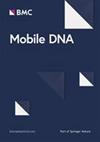论社会层次与内在普遍性
IF 4.7
2区 生物学
Q1 GENETICS & HEREDITY
引用次数: 2
摘要
这篇论文是关于图灵机的,图灵机的头部可以在平面(或更高维度的空间)中移动,但只能以一种自利的方式,通过在访问位置上标记(字母),只移动到未标记的位置,因此未访问的位置。turedos的关键参数是它们的查找半径:为了决定移动到哪里和写什么标记,头部可以查看周围的距离。在本文中,我们研究了结构的层次结构,根据他们的查找半径和空间的维度,使用模拟的概念,直到时空的重新缩放(一个标准的方法在元胞自动机或自组装系统)。我们建立了在turedo参数和所考虑的模拟概念之间存在丰富的相互作用。我们特别指出,对于最自由的模拟,存在半径为1的三维turedo本质上对所有半径都是通用的,但这在2维中是不可能的,在2维中一些半径为2的turedo不可能在1维中模拟。使用更严格的模拟概念,内在的普遍性变得不可能,即使在维度3中也是如此,并且存在严格的半径层次。最后,当限制半径为1时,通用性在维度3中是可能的,但在维度2中不是,然而,我们证明了一个半径为3的turedo可以模拟所有半径为1的turedo。本文章由计算机程序翻译,如有差异,请以英文原文为准。
On Turedo Hierarchies and Intrinsic Universality
This paper is about turedos, which are Turing machine whose head can move in the plane (or in a higher-dimensional space) but only in a selfavoiding way, by putting marks (letters) on visited positions and moving only to unmarked, therefore unvisited, positions. The key parameter of turedos is their lookup radius: the distance up to which the head can look around in order to make its decision of where to move to and what mark to write. In this paper we study the hierarchy of turedos according to their lookup radius and the dimension of space using notions of simulation up to spatio-temporal rescaling (a standard approach in cellular automata or self-assembly systems). We establish that there is a rich interplay between the turedo parameters and the notion of simulation considered. We show in particular, for the most liberal simulations, the existence of 3D turedos of radius 1 that are intrinsically universal for all radii, but that this is impossible in dimension 2, where some radius 2 turedo are impossible to simulate at radius 1. Using stricter notions of simulation, intrinsic universality becomes impossible, even in dimension 3, and there is a strict radius hierarchy. Finally, when restricting to radius 1, universality is again possible in dimension 3, but not in dimension 2, where we show however that a radius 3 turedo can simulate all radius 1 turedos.
求助全文
通过发布文献求助,成功后即可免费获取论文全文。
去求助
来源期刊

Mobile DNA
GENETICS & HEREDITY-
CiteScore
8.20
自引率
6.10%
发文量
26
审稿时长
11 weeks
期刊介绍:
Mobile DNA is an online, peer-reviewed, open access journal that publishes articles providing novel insights into DNA rearrangements in all organisms, ranging from transposition and other types of recombination mechanisms to patterns and processes of mobile element and host genome evolution. In addition, the journal will consider articles on the utility of mobile genetic elements in biotechnological methods and protocols.
 求助内容:
求助内容: 应助结果提醒方式:
应助结果提醒方式:


